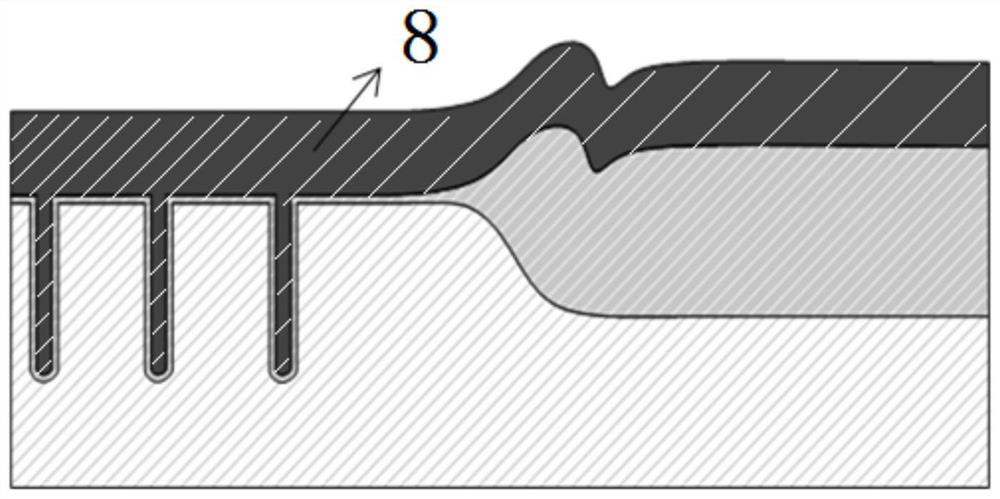Surface planarization method of semiconductor device
A surface planarization and semiconductor technology, applied in the field of surface planarization of semiconductor devices, can solve the problems of unsolved terminal area planarization, polysilicon residue treatment without terminal area, etc. Achieve precise control of the effect
- Summary
- Abstract
- Description
- Claims
- Application Information
AI Technical Summary
Problems solved by technology
Method used
Image
Examples
Embodiment 1
[0039] A method for planarizing a surface of a semiconductor device, comprising the steps of,
[0040] Step 1: If Figure 4 As shown, a cell region oxide layer 2 and silicon nitride 3 are deposited on a silicon substrate 1;
[0041] Step 2: If Figure 5 As shown, the open area formed by etching is oxidized to form an oxide layer 4 in the terminal area;
[0042] Step 3: If Figure 6 As shown, a hard mask layer 5 is deposited;
[0043] Step 4: If Figure 7 As shown, photolithography is performed first, and then the hard mask layer 5, the silicon nitride 3 and the oxide layer 2 of the cell region are etched;
[0044] Step 5: If Figure 8 As shown, a hard mask layer is used as an etching barrier layer to form trenches 6 in the active region;
[0045] Step 6: If Figure 9 As shown, the damaged layer in the trench is removed by dry etching, and then gate oxide oxidation is performed after the damaged layer is removed to obtain the gate oxide layer 7 after the damaged layer i...
PUM
 Login to View More
Login to View More Abstract
Description
Claims
Application Information
 Login to View More
Login to View More - R&D
- Intellectual Property
- Life Sciences
- Materials
- Tech Scout
- Unparalleled Data Quality
- Higher Quality Content
- 60% Fewer Hallucinations
Browse by: Latest US Patents, China's latest patents, Technical Efficacy Thesaurus, Application Domain, Technology Topic, Popular Technical Reports.
© 2025 PatSnap. All rights reserved.Legal|Privacy policy|Modern Slavery Act Transparency Statement|Sitemap|About US| Contact US: help@patsnap.com



